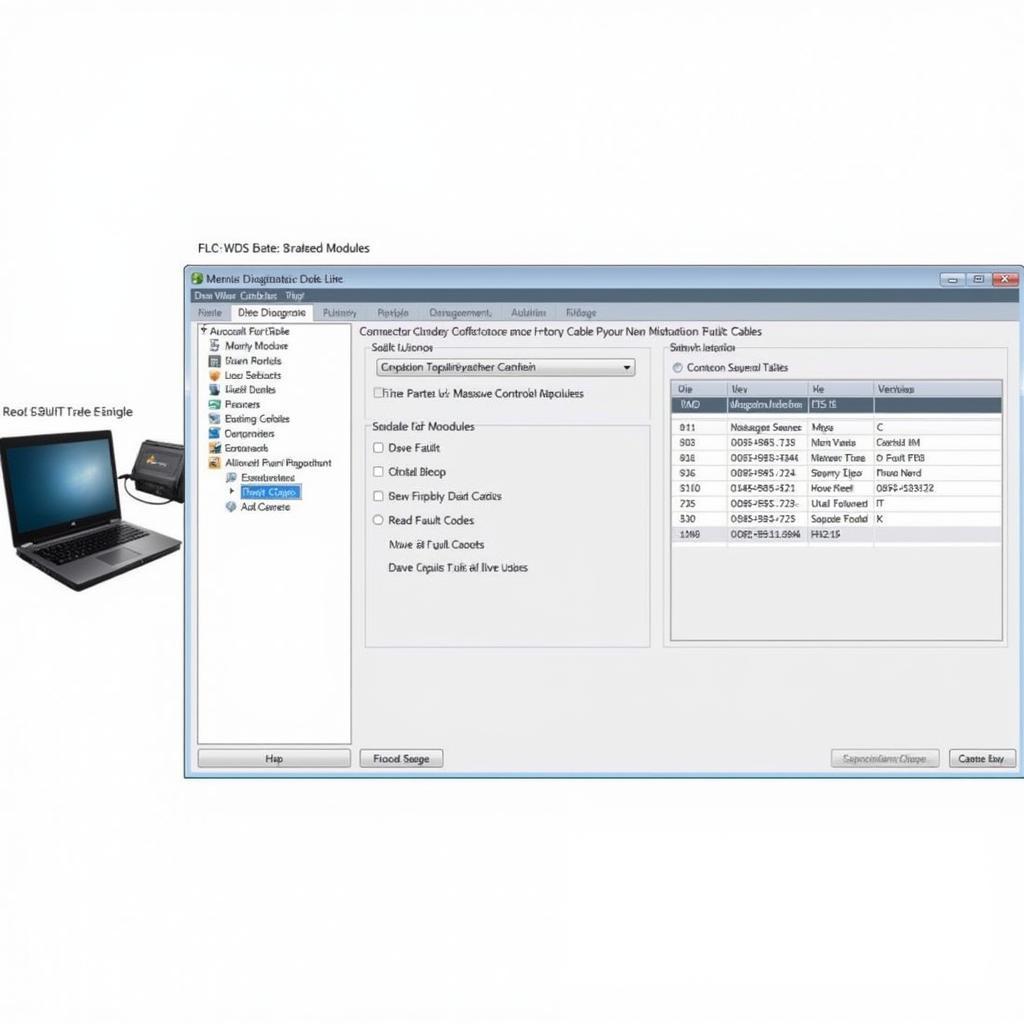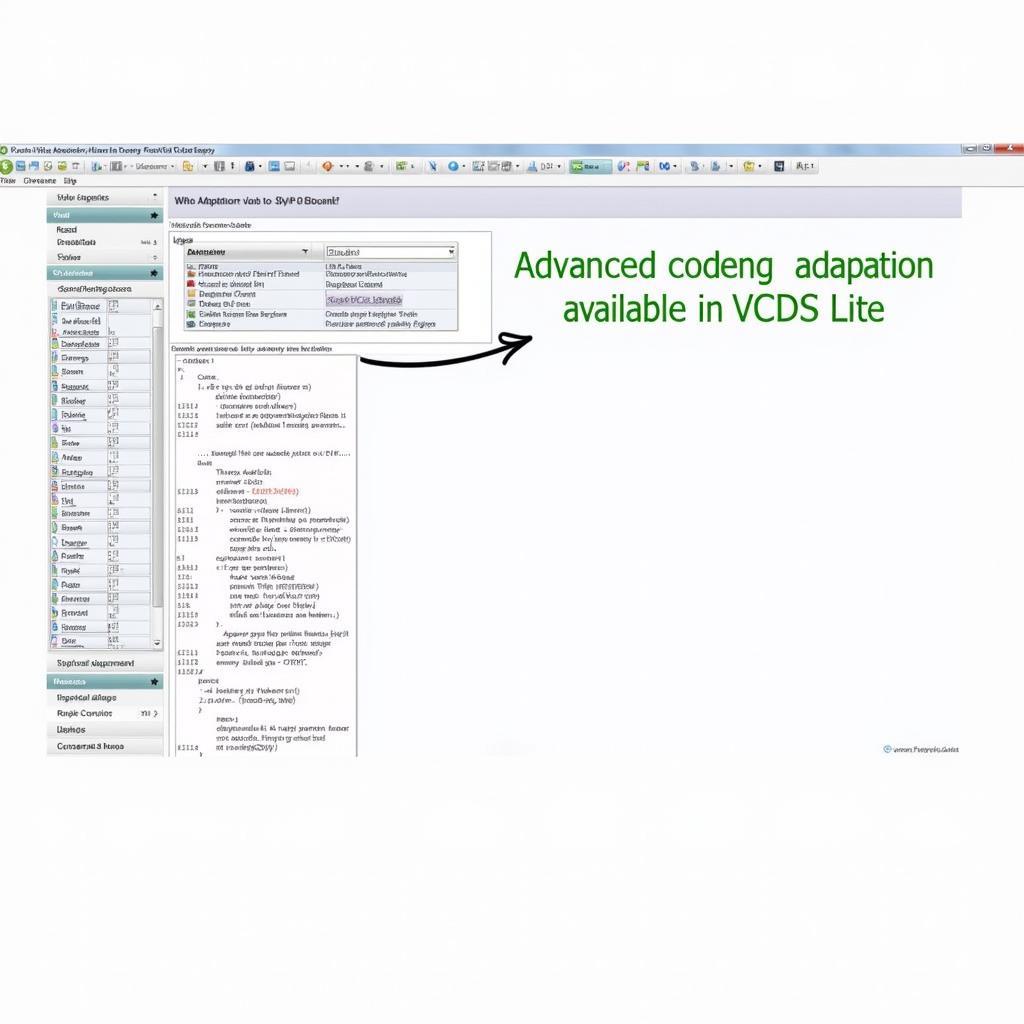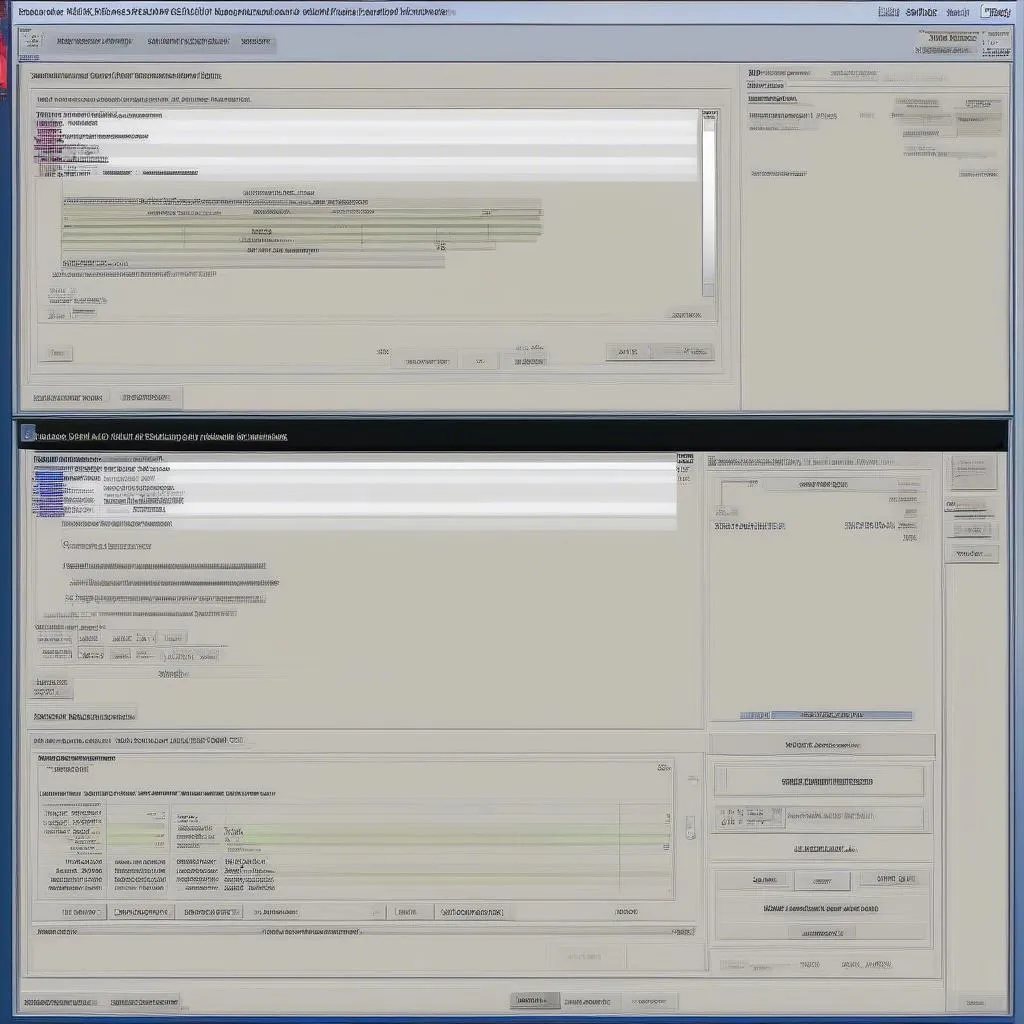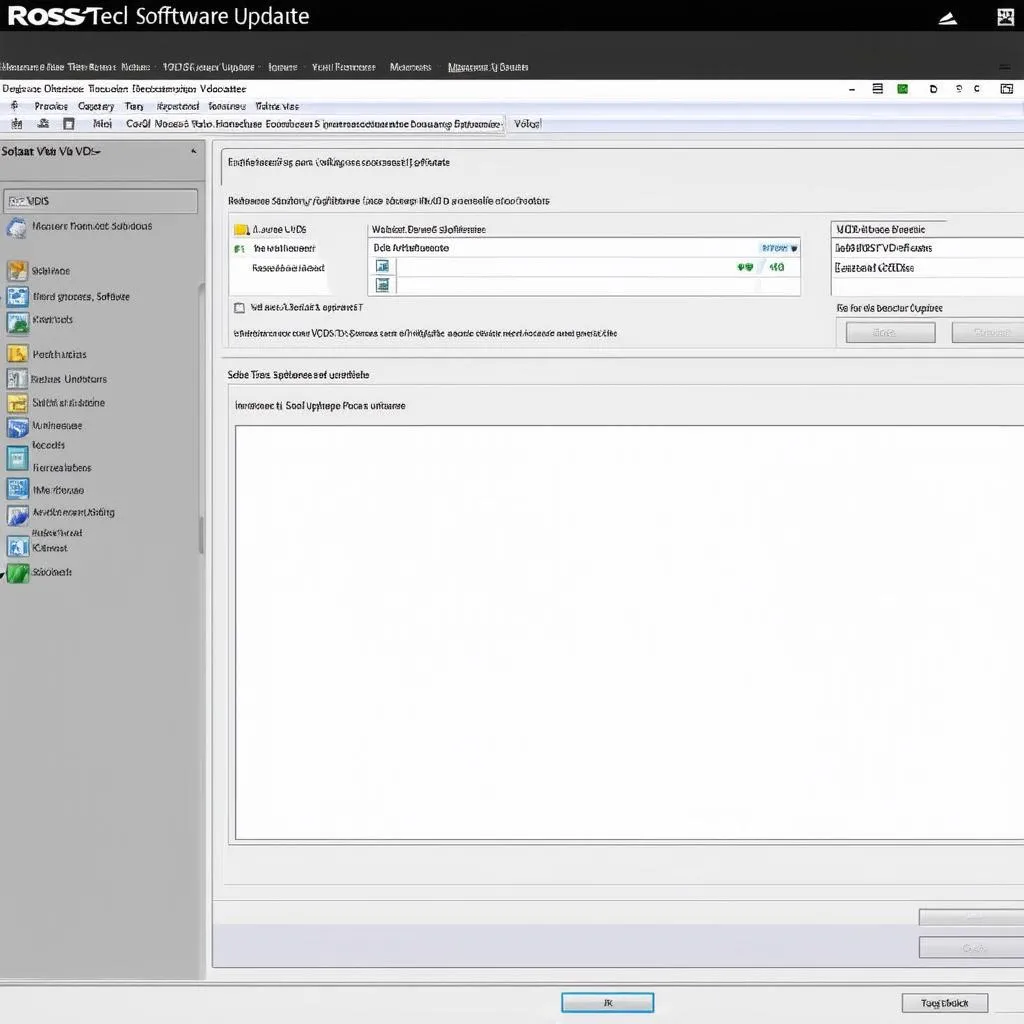Can you edit electronic modules with VCDS Lite? This is a common question among car owners and DIY mechanics looking to delve into the world of vehicle diagnostics. VCDS Lite, a scaled-down version of the full VCDS software, offers a taste of the powerful diagnostic capabilities available for Volkswagen, Audi, Seat, and Skoda vehicles. Let’s explore the possibilities and limitations of using VCDS Lite for module editing.
Understanding VCDS Lite and Its Capabilities
VCDS Lite is a valuable tool for reading and clearing diagnostic trouble codes (DTCs), viewing live data streams from various vehicle modules, and performing basic output tests. It’s a cost-effective entry point for those wanting to diagnose and address simple issues with their VAG vehicles. However, its functionality regarding module coding and adaptations is restricted.
Coding and Adaptations: The Difference
Coding refers to changing the core programming of a control module, effectively altering its behavior. For instance, enabling or disabling certain features like daytime running lights or automatic locking. Adaptations, on the other hand, involve fine-tuning the module’s parameters to optimize its performance within its existing coding. This might include adjusting throttle response or setting the sensitivity of a rain sensor.
 VCDS Lite Interface
VCDS Lite Interface
VCDS Lite’s Limitations in Coding and Adaptations
While VCDS Lite allows you to view existing coding and adaptation values, it generally does not permit you to modify them. The full version of VCDS is required to unlock these advanced functionalities. This limitation is intentional, as improper coding or adaptations can have detrimental effects on a vehicle’s systems, potentially leading to malfunctions or even damage.
What Can You Do with VCDS Lite?
Even with its coding restrictions, VCDS Lite remains a powerful tool for diagnostics and basic troubleshooting. You can:
- Read and Clear DTCs: Identify the source of warning lights and troubleshoot issues.
- View Live Data: Monitor sensor readings and module performance in real-time.
- Perform Output Tests: Activate specific components like actuators and relays to diagnose malfunctions.
- Access Basic Settings: Perform certain guided procedures as outlined in the factory repair manuals.
When Do You Need Full VCDS?
If you intend to modify coding or adaptations, the full version of VCDS is essential. Some common scenarios include:
- Retrofitting Features: Adding features like cruise control or parking sensors that weren’t originally equipped.
- Customizing Settings: Tailoring features like automatic window closing or alarm sensitivity to your preferences.
- Troubleshooting Complex Issues: Diagnosing problems that require in-depth analysis of module behavior and parameters.
- Performing Advanced Procedures: Carrying out procedures like control module replacements or software updates.
Is Using Full VCDS Risky?
Like any powerful tool, full VCDS carries some inherent risk if used improperly. Incorrect coding or adaptations can disrupt the delicate balance of your vehicle’s electronic systems.
“Think of your car’s electronics like a finely tuned orchestra. VCDS is the conductor’s baton. Used skillfully, it can create beautiful music. Misused, it can lead to cacophony.” – John Peterson, Automotive Electronics Specialist
 Full VCDS Software
Full VCDS Software
Conclusion: Can You Edit Electronic Modules with VCDS Lite?
While VCDS Lite is a valuable diagnostic tool, it does not allow for editing electronic modules through coding or adaptations. For these tasks, the full version of VCDS is necessary. While VCDS Lite can help you understand the basics of vehicle diagnostics, remember that caution and proper knowledge are essential when working with these systems.
FAQ:
- What is the difference between VCDS Lite and the full version? The full version offers more advanced functionalities like coding and adaptations.
- Can I update my car’s software with VCDS Lite? No, software updates generally require the full version of VCDS.
- Where can I purchase the full version of VCDS? From authorized Ross-Tech distributors.
- Is it safe to use VCDS on my car? Yes, if used correctly and with proper understanding.
- What happens if I make a mistake while coding with VCDS? It could lead to malfunctions; always proceed cautiously.
- Can I use VCDS on any car? VCDS is specifically designed for VAG vehicles (Volkswagen, Audi, Seat, and Skoda).
- Do I need any special training to use VCDS? While not mandatory, training is highly recommended to avoid potential issues.
Other Helpful Articles:
- Understanding Vehicle Diagnostics
- Common VAG Fault Codes
- VCDS Coding Basics
Need further assistance? Contact us via Whatsapp: +1 (641) 206-8880, Email: CARDIAGTECH[email protected] or visit us at 276 Reock St, City of Orange, NJ 07050, United States. Our customer support team is available 24/7.


